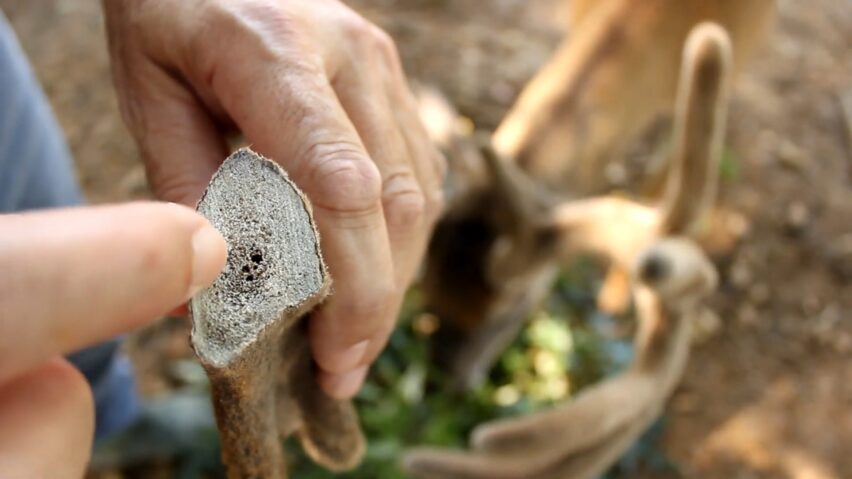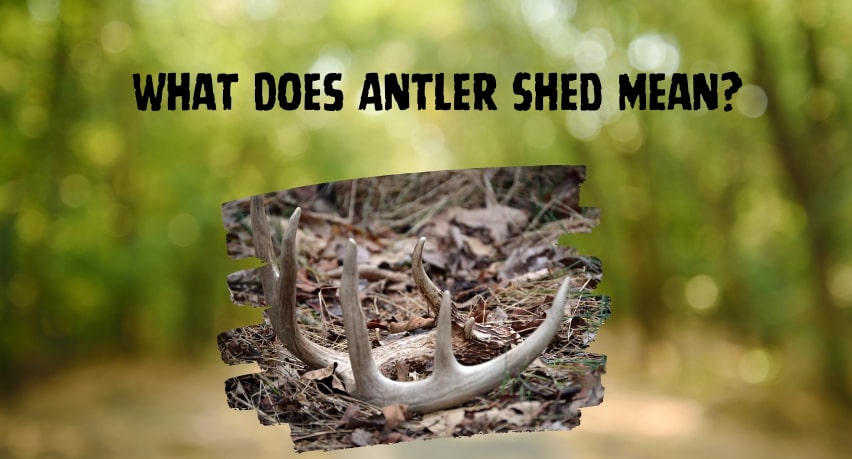Have you ever taken a walk through the woods and come across an antler lying on the ground? If so, you may have asked yourself how it got there. Or maybe you’ve seen a majestic deer or elk adorned with a magnificent rack of antlers and wondered how these impressive appendages are grown, maintained, and ultimately, lost.
The phenomenon that results in the shedding of antlers by male deer, elk, moose, and other members of the Cervidae family is known as “antler shed.” In this in-depth exploration, we’ll delve into this fascinating world to unravel the mystery of antler shedding, providing you with a holistic understanding of this intriguing natural process.
A Brief Overview

First things first, let’s ensure we’re all on the same page with what exactly antlers are. Unlike horns, which are permanent and found in both sexes of bovids (e.g., goats, sheep, cows), antlers are typically only grown by males in the deer family (Cervidae), including deer, elk, and moose, among others.
Antlers are bony structures that sprout from pedicels, small bony platforms that are part of the animal’s skull. They start growing in the late spring or early summer and are initially covered with a layer of skin called “velvet.” This velvet, rich in blood vessels and nerves, nourishes the antlers as they rapidly grow. The size, complexity, and massiveness of an animal’s antlers are determined by factors like the animal’s age, health, and nutrition.
The Cycle of Antler Growth
Antler growth is an annual event that follows a fairly predictable cycle. The growth phase, known as the “velvet” stage due to the fuzzy skin that covers the growing bone, usually begins in the late spring or early summer. Testosterone and other hormones surge in the deer’s body, triggering rapid antler growth. During this time, antlers can grow an astonishing one to two inches per week!
By the end of summer, as daylight hours decrease, testosterone levels rise again, and the velvet begins to dry out. Deer will then rub their antlers against trees or other surfaces to remove the velvet, revealing the hard, bone-like structure underneath in a process known as the “hardening” phase. The resulting antlers serve as weapons for fighting other males for mates during the fall breeding season, known as the rut.
After the rut, in late winter or early spring, testosterone levels in the animal’s body drop. This reduction leads to the weakening of the bone at the base of the antler, causing them to fall off and complete the “shedding” phase.
The Purpose and Benefits of Antler Shedding
Antler shedding may seem like a waste of resources, given the speed and energy with which these structures grow. However, it plays a crucial role in the deer’s survival strategy and life cycle.
Antlers are metabolically expensive to grow, demanding significant amounts of energy and nutrients. Once the breeding season concludes, the survival benefit of maintaining these large, heavy structures diminishes. As food becomes scarce in winter, shedding the antlers helps conserve energy.
Moreover, shedding also prevents potential injuries that could occur due to damaged or broken antlers. Once the antlers have served their purpose in the rut, getting rid of them makes perfect sense from a survival perspective.
Shed Hunting: An Engaging Outdoor Activity
Shed hunting, the act of searching for shed antlers in the wilderness, has become a popular outdoor activity. These antler sheds can be used for crafting, decor, or as an indicator of the presence and health of deer in a specific area. Shed hunting also promotes an appreciation for wildlife, a respect for nature, and it can be a great way to enjoy the outdoors during the late winter and early spring months when other recreational activities may be limited.
What Do Antler Sheds Tell Us?
Beyond being fascinating natural artifacts, antler sheds can provide valuable insights about the deer population in a given area. They can indicate the sex ratio, age structure, and health of the deer herd. Larger, heavier antlers can suggest a healthy diet and good habitat conditions.
Finding multiple sheds year after year in the same area can indicate a stable population, while a lack of sheds could suggest a decrease in the deer population, potentially signaling problems like disease, overhunting, or habitat degradation.
The Ethical Rules of Shed Hunting
As with any outdoor activity, it’s essential to adhere to ethical practices when shed hunting. In many states, shed hunting is regulated to protect wildlife, particularly during the stressful winter months when animals are more susceptible to disturbance. Before embarking on a shed hunting adventure, it is crucial to familiarize oneself with local regulations, which may include specific seasons, permit requirements, or areas where shed hunting is prohibited.
Additionally, be respectful of the animals and their habitat. Do not disturb animals, especially during winter, as causing them to expend unnecessary energy can lead to weakened health conditions. Leave no trace of your presence, respecting the principle of “take nothing but photos, leave nothing but footprints.”
Antlers Versus Horns: Knowing the Difference
Understanding the concept of antler shedding also requires an appreciation of the difference between antlers and horns. Antlers, as we’ve mentioned, are typically grown by males, are branched, and shed each year. They are made of bone tissue, and the animals can grow a new set each year.
On the other hand, horns—found in animals like goats, cows, and antelopes—are permanent. They grow throughout an animal’s life, are unbranched, and are composed of a bony core covered by a sheath of keratin, the same substance that makes up our hair and nails. Unlike antlers, horns are not shed, and damage to them is permanent.
This difference is more than just a biological curiosity—it is a crucial distinguishing feature that shapes the behaviors and life cycles of these animals.
The Science Behind the Growth

The speed and efficiency of antler growth are truly remarkable. Antlers are among the fastest-growing mammalian tissues. This rapid growth is made possible by a special type of cell called a chondrocyte. Chondrocytes are responsible for creating cartilage, which later transforms into bone, giving the antler its rigid structure.
Furthermore, the growth of antlers is a complex process regulated by numerous hormones, including testosterone and insulin-like growth factor 1 (IGF-1). Understanding this process is not just important for wildlife biology—it also has implications for human medicine, offering potential insights into bone development, regeneration, and healing.
A Curious Exception: Reindeer Antlers
One fascinating exception to the rule that only male deer grow antlers is the reindeer (or caribou, as they’re known in North America). Both male and female reindeer grow antlers, making them unique among deer species. Females use them to compete for food in the harsh Arctic winters and to protect newborn calves in the spring.
Interestingly, male and female reindeer also have different antler cycles. Males follow the typical pattern, shedding them after the fall rut. However, pregnant females can retain their antlers until they give birth in the spring, using them to defend food resources during the challenging winter months.
Wrapping Up
Antler shed is an incredible phenomenon wherein male deer and other Cervidae shed their antlers annually after the rut. This cycle of growth, hardening, and shedding is a testament to the marvel of nature, driven by hormonal changes and the changing seasons.
Antler sheds are more than just discarded bone; they are symbols of the struggle for survival, artifacts of the cycles of life, and unique pieces of natural artistry. The next time you stumble upon a shed antler during your walk in the woods, take a moment to appreciate the story it tells – a year in the life of a magnificent creature, surviving and thriving in the wild.

